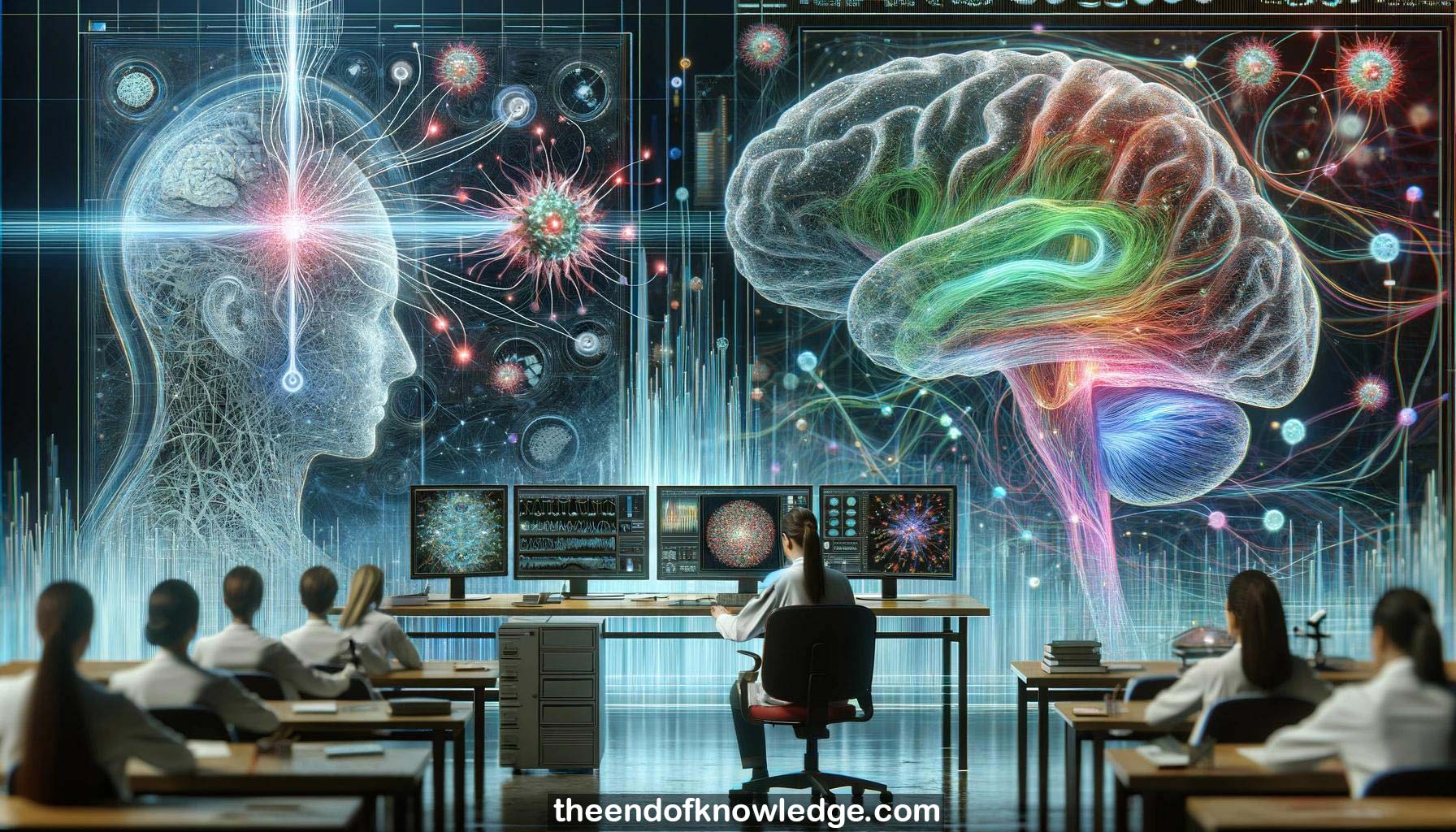 >
>
Concept Graph & Resume using Claude 3 Opus | Chat GPT4 | Gemini Adv | Llama 3:
Resume:
1.-Machine learning helps neuroscientists interpret brain data, while neuroscience provides structural priors and inspiration for novel machine learning approaches.
2.-The speaker's lab examined how deep learning could work in the brain using specific dendrites.
3.-This led to the concept of ensemble multiplexing and a potential solution for how the brain does credit assignment.
4.-The work points to whether neural network units should have states at multiple levels (meso and micro states).
5.-This could enable dynamic routing in neural networks.
6.-Visual processing in mammalian cortex proceeds in stages analogous to a multi-layer convolutional neural network.
7.-True deep learning requires end-to-end training to ensure changes help achieve the learning objective.
8.-The brain's solution to credit assignment is unclear since backpropagation seems biologically unrealistic.
9.-Neocortical pyramidal neurons have a complex tree-like structure with basal and apical dendrites that receive different inputs.
10.-Apical dendrites are electrotonically distant from the soma and can generate nonlinear plateau potentials that alter somatic spiking.
11.-A multi-layer neural network was built simulating pyramidal neurons with segregated dendrites for credit assignment.
12.-Fixed random feedback weights work due to the "feedback alignment" effect described by Lillicrap et al.
13.-The network learned representations that shaped early layers to help later layers categorize MNIST digits.
14.-Plateau potentials in apical dendrites are good at driving burst firing, a potentially distinct signal for top-down information.
15.-Ensemble multiplexing allows simultaneous top-down and bottom-up signaling by treating bursts and spikes as events.
16.-Event rate tracks bottom-up somatic input while burst probability tracks top-down apical input.
17.-Somatostatin-positive interneurons inhibit apical dendrites of local pyramidal cells they receive input from, forming a credit assignment microcircuit.
18.-An ensemble model incorporated this microcircuit, with apical voltage being a function of top-down burst rates and recurrent inhibition.
19.-Burst probability is the sigmoid of the apical voltage, enabling credit assignment without pausing computation.
20.-Recurrent inhibition is trained to keep apical voltage near zero, preventing vanishing gradients and enabling more layers.
21.-The ensemble model performs as well as backpropagation on MNIST and is more robust to poor weight initializations.
22.-Neocortical microcircuits likely use ensemble multiplexing and inhibition for credit assignment and preventing vanishing gradients.
23.-Units in neural networks may be better modeled as groups of neurons rather than single neurons.
24.-Biological evidence supports neuron groups derived from the same progenitor cell having shared connectivity and functional properties.
25.-Modeling units as neuron ensembles requires differentiating between mesoscopic (ensemble-level) and microscopic (individual neuron) states.
26.-Multiple microstates (specific spiking/bursting neurons) can correspond to the same mesostate (overall event/burst rates).
27.-Mesoscopic weights between units would be a function of the microscopic weights between active neurons in the ensembles.
28.-Microscopic weights can remain fixed while mesoscopic weights change based on microstates, enabling dynamic information routing.
29.-Mesoscopic weights can be modeled as a product of presynaptic spiking, postsynaptic input receptivity, and the microscopic weights.
30.-While still being developed, this neuroscience-inspired approach could provide powerful context-dependent computation and routing in artificial neural networks.
Knowledge Vault built byDavid Vivancos 2024